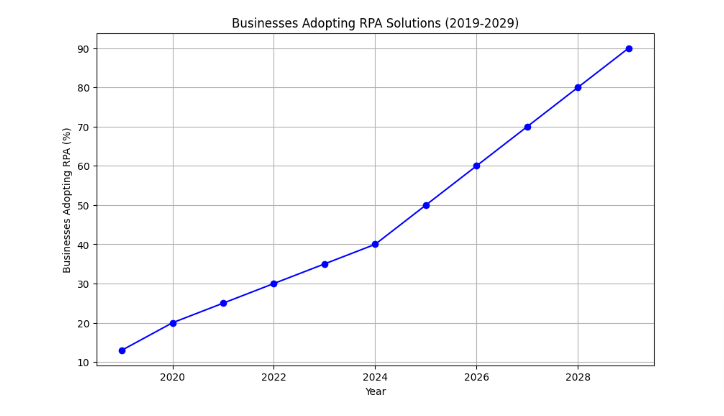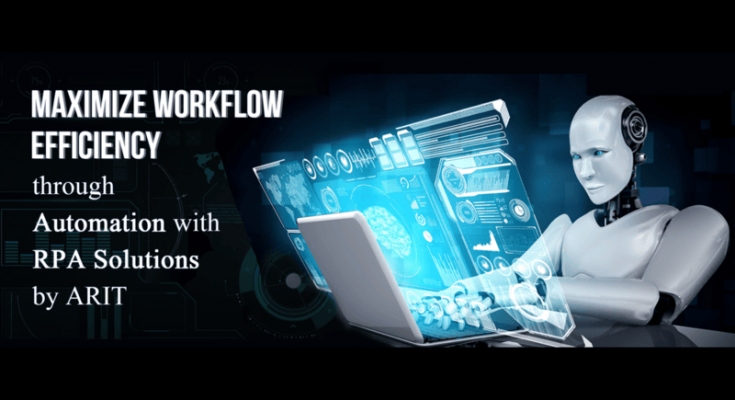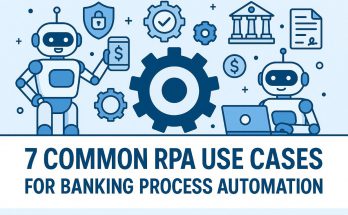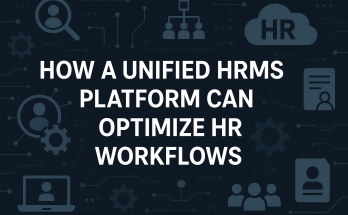Inefficiency is no small inconvenience in today’s hyper-competitive business environment—in fact, it can easily tip the scales between success and failure. Believe it or not, studies show that inefficiencies in business operations are responsible for an estimated 20-30% revenue loss. That’s a huge hit when you think about it. When workflows get delayed, manual errors start to creep in, and outdated processes linger, it all adds up to higher costs, frustrated customers, and missed opportunities for growth.
The bottlenecks created by inefficient workflows often prevent businesses from reaching their full potential, even when they have the ability to deliver so much more. It’s unsettling but true—an incredible 60% of employees’ time is spent on repetitive tasks, tasks that could easily be automated to boost productivity and profitability. If these inefficiencies aren’t addressed, businesses risk losing their competitive edge in today’s fast-paced market.
The quickest way to cut down on inefficiencies and errors in your business is by automating those repetitive tasks, and that’s precisely where RPA comes into play. If you’re aiming to cut through operational complexities and reduce inefficiencies, teaming up with a robotic process automation (RPA) company could be the solution. RPA technology automates repetitive, rule-based tasks, enhancing accuracy and speed. But how does it all work? Let’s navigate through the details and explore how RPA can transform your business processes for the better.
Robotic Process Automation: An Overview
RPA, which stands for Robotic Process Automation, is a technology that deploys software bots to automate repetitive, rule-based tasks traditionally handled by people. These bots can mimic human actions, such as data entry, processing transactions, triggering responses, or interacting with other digital systems. Imagine all those repetitive tasks handled faster and error-free. That’s what Tech Anand Rathi’s Robotic Process Automation services bring to the table where automated bots handle the heavy lifting while freeing up your team for more impactful work.
“RPA is no longer just about cost-cutting; it’s about enabling a digital workforce and improving the agility and responsiveness of business operations.”
HfS Research (A Global Business and IT Services Research Firm)
How RPA Works
RPA is like having a virtual team that performs tasks just like humans—but with greater speed, accuracy, and endurance. That’s where Robotic Process Automation services can come in handy to boost your business efficiency and workflow.
Here’s how it works:
- Bots Imitate Human Actions: RPA bots interact with your systems and applications exactly as a person would, but they do it faster and without errors.
- Automates Repetitive Tasks: From data entry and form filling to invoice processing and report generation, RPA takes over routine tasks, freeing your team to focus on more complex and valuable work.
- Non-Intrusive Implementation: You don’t need to change your current IT setup. RPA integrates seamlessly with existing systems, making it a quick and cost-effective solution.
- Rules-Based Consistency: The bots follow predefined rules and workflows, ensuring that tasks are performed consistently and with minimal errors.
By automating these processes, RPA not only improves efficiency but also boosts productivity across the board.
How Operational Inefficiency Drains Your Cost and Business Resources
Inefficiency in businesses often goes unnoticed, but its impact can be significant—it often leads to higher operational costs, wasted resources, and reduced productivity. Whether it’s manual tasks, bottlenecks, or outdated processes, inefficiencies slowly drain the lifeblood of your business. Dismissing RPA technology or failing to seek expert RPA services can hold your business back from achieving optimized, streamlined workflows.
Here’s how operational inefficiency negatively affects your bottom line:
1. Reduced Productivity
According to a study by The Work Institute, a staggering 40% of employee productivity is lost due to inefficient processes, repetitive tasks, and unclear workflows.
Imagine the frustration of constantly battling with manual tasks like data entry, document management, or jumping between multiple applications—all these low-value activities eat away at valuable time. And it’s not just about time lost—these inefficiencies can wear down employees, leaving them demotivated and disengaged.
The ripple effect…
Reduced output, a drop in morale, and a higher likelihood of turnover. Simply put, when workflows aren’t optimized, both the business and its people pay the price. That’s where RPA companies step in to transform routine tasks into streamlined, cost-effective processes with automated bot tools.
2. Increased Costs
According to IDC, inefficiencies can cost companies a staggering 20-30% of their annual revenue.
That’s a significant chunk of profit lost to time-consuming manual tasks, frequent errors, and delays in workflows. These inefficiencies don’t just affect productivity; they drive up operational costs as employees spend extra hours correcting mistakes or managing tasks that could easily be automated.
And consequently…
Increased overhead has a more pronounced effect on business gains. Since businesses find themselves struggling to stay competitive as inefficiencies quietly drain their resources, they experience a significant toll on their overall profitability.
3. Errors and Compliance Issues
Gartner reports that human errors in manual data entry can cost organizations anywhere between 1% to 10% of their annual revenue.
That’s a significant blow to any company’s bottom line, driven by inefficient processes that increase the likelihood of mistakes in critical tasks like invoice processing, data management, and regulatory compliance. The consequences go beyond just financial loss—errors can result in hefty fines, legal penalties, and even tarnish a company’s reputation.
Worse still…
These mistakes compromise data accuracy and security, leading to poor decision-making, missed business opportunities, and dissatisfied customers, all of which can slow a company’s growth trajectory.
4. Slow Decision-Making and Delays
A study by McKinsey revealed that inefficient workflows and information bottlenecks can delay decision-making by up to 25%, stalling both internal projects and timely customer service responses.
Think about it—when critical data is stuck in slow, outdated processes, it becomes harder for teams to act quickly, whether it’s adjusting to market changes or meeting customer demands. These delays not only hinder productivity but also leave a company vulnerable to more agile competitors who can pivot faster and seize opportunities.
The result…
Businesses hindered by slow decision-making and delays often get left behind in today’s fast-moving market
5. Employee Turnover
According to a report from Unit4, employees waste around 69 days per year on administrative tasks, a huge drain on productivity that contributes directly to frustration and burnout.
When employees are bogged down by monotonous, low-value work like paperwork and data entry, their engagement plummets, leading to dissatisfaction. Over time, this burnout becomes a key driver of high employee turnover rates, forcing companies to constantly deal with the costs of recruiting and training new staff.
The impact is clear…
High turnover disrupts operations, undermines morale, and depletes valuable talent, ultimately slowing down long-term growth and success.
How RPA Tackles Process Inefficiencies for Improved Productivity
RPA (Robotic Process Automation) is a cutting-edge technology that automates repetitive, time-consuming tasks, allowing businesses to operate more efficiently. By taking over manual processes, RPA not only reduces human error but also accelerates workflows, enabling teams to focus on higher-value activities.
Let’s take a look at how RPA can eliminate process inefficiencies, enhance productivity, and streamline your business operations for optimal performance:
1. Enhanced Productivity with the Automation of Repetitive Tasks
Robotic Process Automation (RPA) offers a powerful solution to automate repetitive, time-consuming tasks like data entry, invoice processing, customer onboarding, and report generation. By implementing RPA, businesses can free up their employees from the grind of mundane tasks, allowing them to focus on more strategic, high-value activities that drive growth and innovation. This not only boosts productivity but also significantly reduces the risk of human errors. For example, RPA bots can process thousands of invoices in mere minutes, enabling financial teams to shift their focus to analysis and strategic planning. The result? A more efficient, agile, and error-free operation.

2. Error Reduction and Improved Accuracy
RPA eliminates human error by automating data-driven tasks, ensuring consistently accurate and reliable output. This improvement in data quality leads to better decision-making, lowers compliance risks, and enhances overall customer satisfaction. For instance, in a banking setup, RPA can automatically verify and process loan applications, drastically reducing the chances of errors that often occur with manual data entry and regulatory compliance tasks. By streamlining these processes, banks not only boost efficiency but also ensure a smoother and more reliable customer experience.

3. Faster Decision-Making and Process Speed
RPA accelerates data processing and automates workflows, enabling faster turnaround times for critical business tasks. This speed translates into quicker data analysis, reporting, and customer interactions, allowing businesses to make informed decisions and respond swiftly to market changes. For example, in supply chain management, RPA can optimize order processing and inventory tracking, significantly reducing the lead time for order fulfillment. By automating these processes, businesses can enhance operational efficiency, improve customer satisfaction, and stay competitive in dynamic markets.
4. Enhanced Scalability and Cost Reduction
RPA allows businesses to scale operations seamlessly without needing to increase their workforce or resources proportionally. This means that companies can efficiently manage fluctuating workloads without the added expense of hiring more staff or boosting operational costs by leveraging RPA services. For example, e-commerce companies can leverage RPA during peak seasons like Black Friday to handle a surge in order volumes. By automating tasks such as order processing and customer support, they can manage the increased demand without needing to hire temporary workers, significantly reducing costs while maintaining efficiency.

5. Improved Employee Engagement and Satisfaction
By automating repetitive and low-value tasks, RPA solutions can empower employees to focus on more creative, problem-solving, and decision-making activities that add value to the business. This shift leads to greater job satisfaction, as employees are freed from mundane tasks, which in turn reduces turnover and increases overall engagement. For example, HR teams can automate time-consuming processes like employee onboarding, payroll, and benefits management through RPA. This allows HR professionals to dedicate more time to initiatives that enhance employee development and engagement strategies, fostering a more motivated and productive workforce.
RPA Adoption Trends in Business Operations
Businesses have increasingly embraced Robotic Process Automation (RPA) in recent years to boost productivity and accuracy in their operations. This trend is fueled by the need to streamline processes, minimize human error, and allow employees to concentrate on value-driven tasks. With the increasing recognition of RPA development and its transformative potential, companies are rapidly adopting this technology, and projections indicate that adoption rates could hit 90% by 2029.
Here is a visual representation of the past and future (projected) statistics regarding RPA adoption among businesses:

By integrating RPA into their workflows, organizations are not only enhancing efficiency but also gaining a significant competitive edge in today’s digital landscape. This shift towards automation positions businesses to respond more effectively to market demands while maximizing their resources and capabilities.
Expert RPA Consultancy by Tech Anand Rathi
Inefficient processes can drag down businesses, leading to decreased productivity, increased costs, and higher error rates, which ultimately result in reduced output and possible business failure. By employing RPA, organizations can streamline operations, enhance accuracy, cut costs, and foster a more engaged workforce.
At Tech Anand Rathi, our RPA Consultancy is all about making life easier for your team. We handle the repetitive tasks with smart automation, freeing up your people to focus on what really drives growth. Say goodbye to bottlenecks and hello to streamlined workflows that let you scale with ease.
Interested in seeing what ARIT’s RPA solutions can do for your business? Connect with us today.




